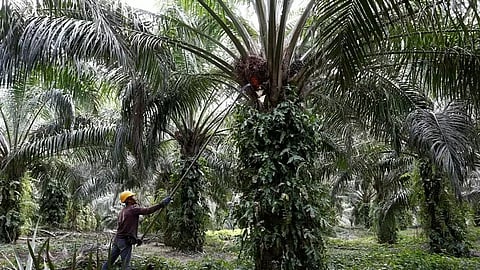
- Home
- Live Blog
- Breaking News
- Top Headlines
- Cities
- NE News
- Sentinel Media
- Sports
- Education
- Jobs

The Central Government's decision to launch the National Mission on Edible Oils – Oil Palm (NMEO-OP) with a special focus on the Northeast region and the Andaman and Nicobar Islands may prove catastrophic for the biodiversity of both the regions. Palm oil cultivation requires sufficient water which explains the focus of the scheme in rain-fed areas of the region. Wildlife biologists and environment experts have cautioned that rampant oil palm cultivation on a mass scale could lead to the destruction of pristine rainforests in the northeast region and wipe out wildlife species and rich biodiversity. Their apprehension stems from the global experience of threat to the orangutan population and other species in Indonesia and Malaysia due to the destruction of large patches of rainforest on account of a massive expansion of oil palm cultivation. Five countries – Indonesia, Malaysia, Cambodia, Nigeria, and Thailand account for 90 per cent of oil palm production. The demand for edible palm oil is surging globally as its yield is five times the yield of edible oil from traditional oilseeds. At present, India has a 3.70 lakh hectare area under oil palm cultivation. The Central Government proposes to increase it to 10 lakh hectares by covering an additional area of 6.5 lakh hectares under the new scheme. The production of crude palm oil is estimated to go up to 11.20 lakh tonnes by 2025-26 and up to 28 lakh tonnes by 2029-30 following implementation of the scheme for which the government has made a financial allocation of Rs 11,040 crore. The allocation includes a central share of Rs 8,844 crore, state share Rs 2,196 crore and includes viability gap funding to the farmers. The scheme is aimed at cutting down the import bill of edible oil as palm oil constitutes about 60 per cent of edible vegetable oil imported by the country. Apart from palm oil, edible oil from mustard, soybean, groundnut, sunflower, sesame, sunflower seeds, coconut, rice bran are also consumed in India. Official estimates show that of total palm oil imported by the country, imports from Malaysia and Indonesia account for 54 per cent. In June, the Ministry of Finance slashed the duty on crude palm oil to 10 per cent from 15 per cent till September 30 to bring down the retail prices of edible oils. International price volatility impacting retail prices of edible oil in India is the rationale behind the push for ramping up domestic production of crude palm oil and reducing dependence on the import of edible oils. Among states in the northeast region, Mizoram leads in oil palm cultivation which has already expanded to about 29,000 hectares. Monocropping on traditional jhum lands results in a drastic reduction of bird species and other organisms and the variety of the traditional food baskets of the farmers are lost. Change in land use pattern due to shifting from traditional jhum cultivation to settled palm oil cultivation has changed community ownership to individual ownership of land in which women are being pushed out. Protecting the rainforest from expanding palm oil plantations in the region will be a huge challenge. Under the new scheme, a substantial increase has been made in the assistance of inputs/interventions for planting material for oil palm from Rs 12,000 per hectare to Rs 29,000 per hectare. Special assistance of Rs 250 per plant is also being given to replant old gardens for rejuvenation of old gardens. The government will give a price assurance in the form of viability price to the oil palm farmers for Fresh Fruit Bunches from which oil is extracted to protect the farmers from volatility in international prices of crude palm oil. The government hopes that price assurance will boost the confidence of farmers to expand areas under oil palm which will help to augment domestic production of palm oil. Traditional jhum cultivators in hills of northeast region dependent on subsistence farming due to falling jhum cycles, these incentives will find the incentives lucrative to go for palm oil as settled cultivation. If not regulated and planned properly through mapping of areas for oil palm cultivation, unchecked expansion of plantation may lead to cutting of forests and pose an existential threat to flora and fauna that are unique to this biodiversity hotspot. A comprehensive study on the impact of oil palm cultivation in Mizoram on biodiversity and socio-economic spheres will be useful in deciding the right strategy before pushing oil palm in the northeast region. It is hoped that the central, as well as state governments, will consider the concerns raised by environment experts against uncontrolled cultivation of oil palm in the northeast region and formulate a detailed action plan for the region. The latest report of the Intergovernmental Panel on Climate Change cautioning against irreversible changes to climate calls for fine balancing conservation of forest and environment and meeting demands of edible oil in the country. Oil palm policy must ensure that forests in the northeast remain protected as a major global carbon sink.